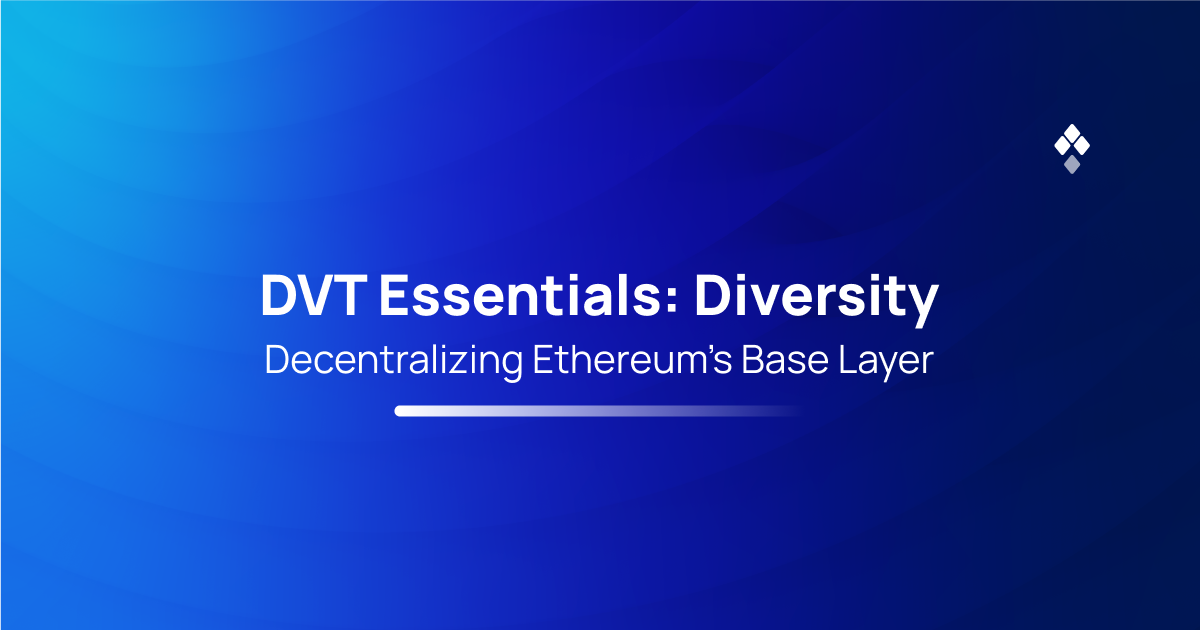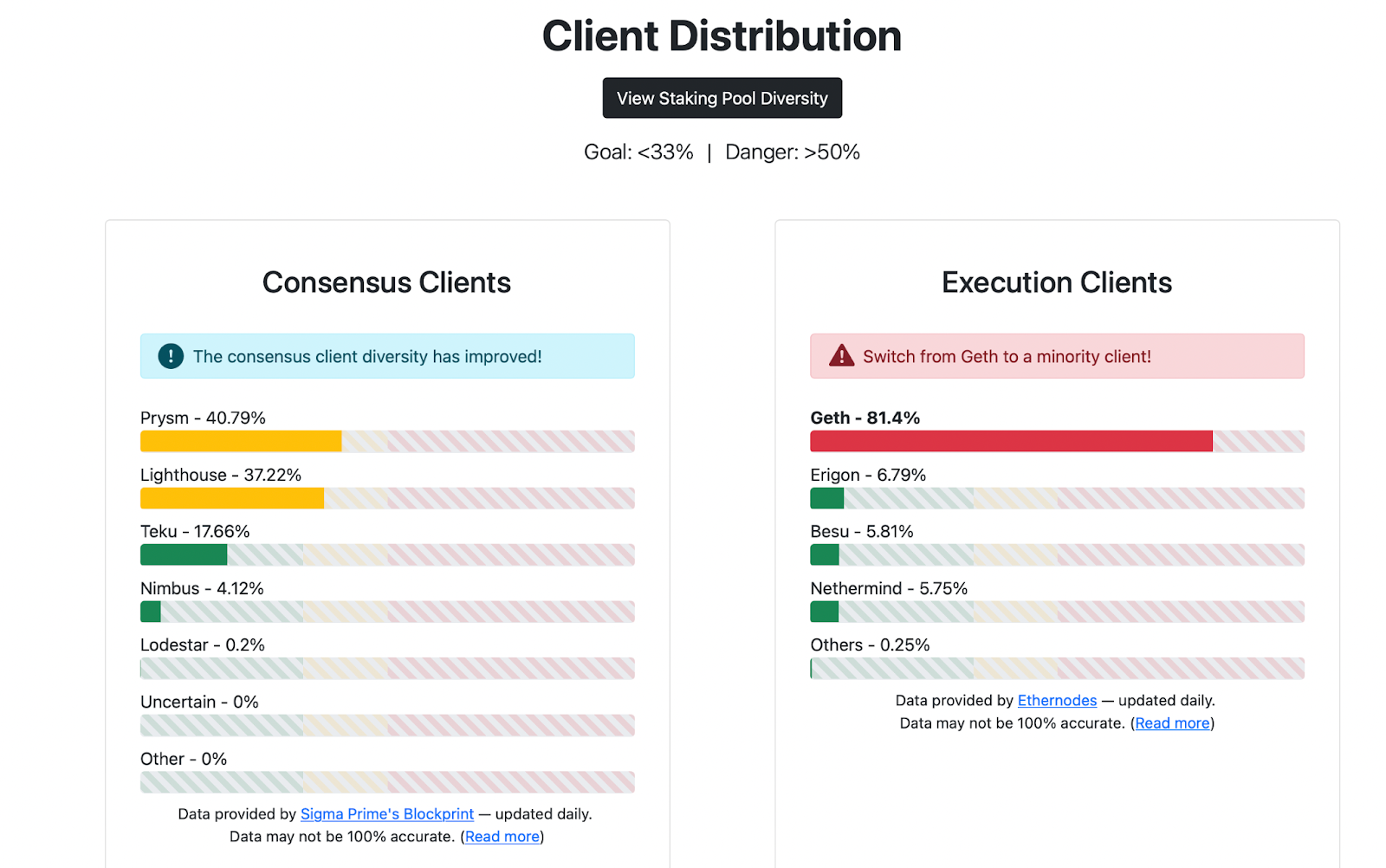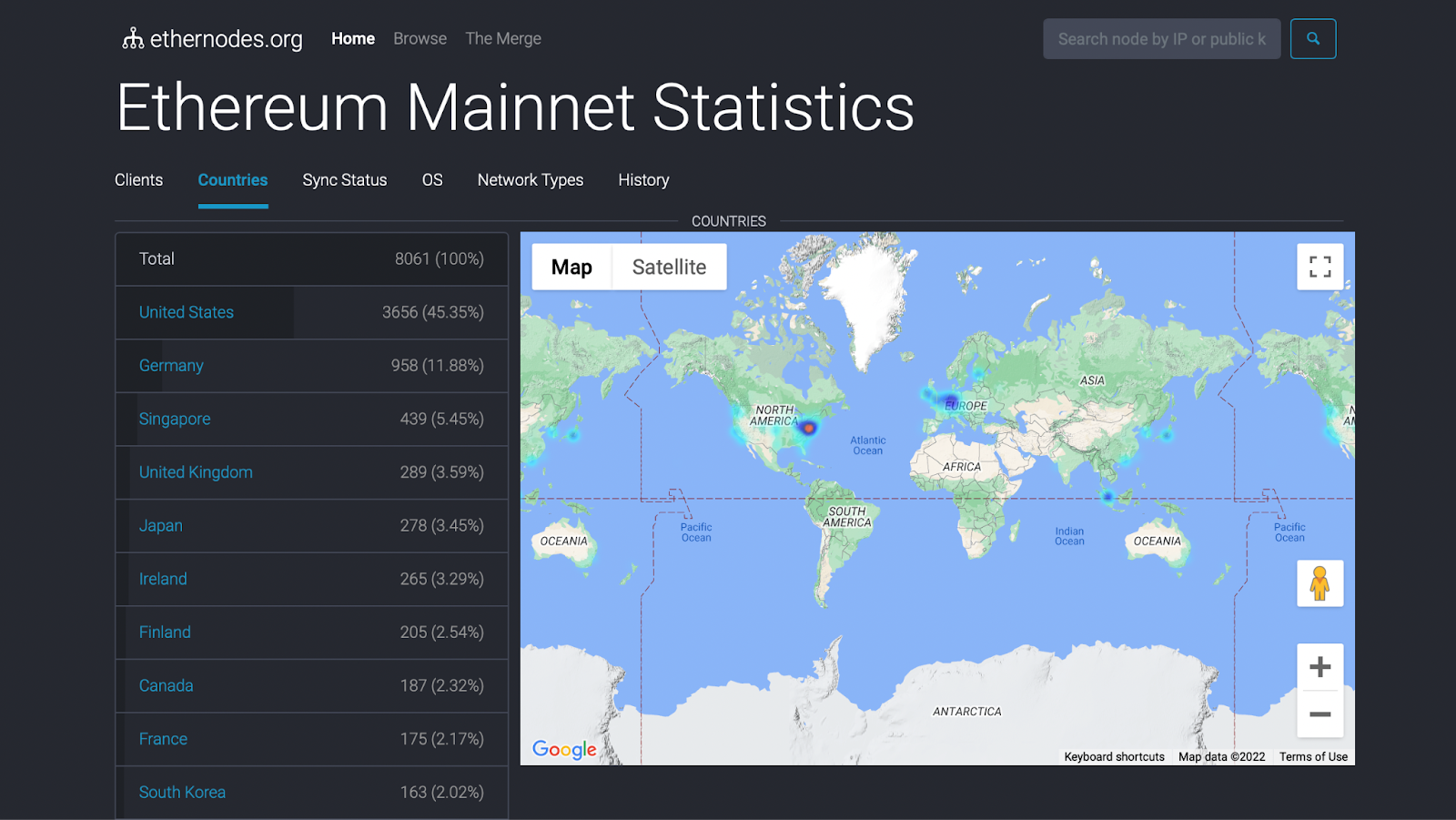DVT Essentials: Diversity
Boost Ethereum's decentralization with ssv.network's DVT. Enhance validator diversity. Learn about the impact with our DVT Essentials series.

This post is the first in a series of DVT Essentials that aim to educate on the far-reaching impact of Distributed validator technology (DVT). By helping to diversify the base layer of Ethereum, DVT proposes a solution for Ethereum validators that adds much more value than most might currently realize. Diversification is vital for many reasons, but it’s even more so when it comes to Ethereum. In this post, we’ll discuss how DVT — and more specifically — ssv.network’s implementation of DVT helps improve Ethereum validator diversity.
So what do we mean by diversity? In context of the Ethereum blockchain, it’s to have a wide selection of different client, server, and staking providers; so that the ecosystem doesn’t need to depend on any one technology, jurisdiction, or entity. In essence, having more diversity is one of the ways to help decentralize and make Ethereum more antifragile.
The main challenge that eth validators — without DVT — encounter is that they are usually run by a single entity. A single validator, using a single client in a specific location (cloud-based or hardware), creating a single point of failure. By not having enough diversity, each layer of the network can become reliant on a handful of service providers.

What’s referred to as ‘client diversity’ actually means having several different execution and consensus clients to choose from when creating an Ethereum validator node. The Execution Client listens and executes transactions, maintains the latest state, and records all Ethereum data. While the Consensus Client provides consensus (using the PoS algorithm) from validated data from the Execution Client. These two clients work together to sync the Ethereum network’s state.
Client diversity plays an integral part in Ethereum’s resilience and liveness. And according to the Ethereum Foundation, both consensus and execution clients need to be more diverse to prevent potential chain-wide mishaps. Validators without DVT rely on a single consensus and execution client, and should something happen to the software; validators can have problems conducting their duties which can lead to slashing. If 2/3rds of validators use the same client, there’s a genuine risk of disrupting the chain and incurring monetary loss for the validators using the client.
This is where DVT comes in. SSV Network’s distributed validator infrastructure enables new ways for staking validators to improve client diversity by splitting a validator key into KeyShares and distributing them between the multiple non-trusting nodes (operators) in the network.


Every operator in the ssv.network can choose their validator client(s) software and infrastructure, while stakers select the independent operators that will run their validator(s). Running a validator through the ssv.network requires a minimum of four operators to conduct duties on behalf of the staker. This effectively creates the opportunity for each validator to have four different consensus and execution clients running their validator simultaneously, increasing the overall health of the Ethereum blockchain and eliminating single points of failure for validator clients.

With the current regulatory environment being turbulent as it is, the location of an ETH validator is a crucial decision. Validators operating in a specific jurisdiction must be aware that they must adhere to that country’s laws. This also applies to the distribution of cloud services like AWS that some stakers use as infrastructure for their validators.
The recent interventions of U.S. regulator OFAC have resulted in more than half of mined Ethereum blocks being censored due to new legislation. This means that stakers need to be wary of where their validator is operated from and in which regulated activities they will have to participate. To make Ethereum as antifragile and uncensorable as possible, validators must be decentralized among as many jurisdictions as possible. If a service is based in the U.S., but the validator’s operation is spread across various jurisdictions worldwide, regulators will have a much harder time censoring or turning it off.
The protocol allows operators to add relevant metadata so that stakers have a better idea of who they’re trusting their stake with. Combine this with SSV’s revolutionary web app and smart contracts that enable users to customize their validator construct, and you have a location-independent validator. This makes validators more fault tolerant from a regulatory perspective. And in a practical sense, it allows validators to select operators in various jurisdictions to keep their validator safe from regulations that might influence Eth validators at a national level.

When looking at the situation of intermediary staking service providers — who stake ETH on behalf of the user — the problem is nuanced. While stakers may be very diverse, the majority of staked ETH and validators may be indirectly controlled by the entities that hold the majority of staked ETH. This can be dangerous for the network and its users since it creates a sizeable centralized target and point of failure, making the network more vulnerable to attack or bugs. Lido has just over 142,000 validators run by 29 different entities (or operators). In contrast, Coinbase has around 55,000 validators running on its own infrastructure. If something should happen to their infrastructure, validators could see significant losses or, as we just mentioned, they would need to comply with government restrictions.
DVT easily solves this issue by allowing the dominating ETH staking service providers and centralized exchanges (CEXs) to distribute their validator operations between many non-trusting nodes. This means that even if staking providers use their own infrastructure, validators can be distributed through the ssv.network to remove the single point of failure.
SSV helps to maintain the vision of a truly decentralized Ethereum and encourages validators to use different setups, making diversity a best practice for a fault-tolerant configuration. SSV operators have the potential to be so diverse, geographically spread out, and antifragile that it would take a mass extinction event to stop a validator from doing its job. Have a look at SSV’s Shifu (v2) testnet to see what the latest DVT can do!
Website | Network Hub | Discord | Dev Center | Documentation | GitHub